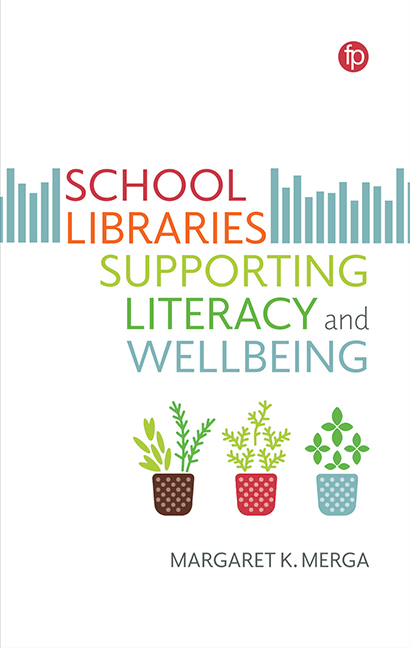Book contents
- Frontmatter
- Contents
- List of Tables
- Acknowledgements
- Abbreviations
- Introduction
- 1 What Do School Library Professionals Contribute to Student Learning and Support? A Focus on Australia and the UK
- 2 School Libraries and Reading Engagement for Literacy
- 3 Librarians Supporting Struggling Literacy Learners Beyond the Early Years
- 4 School Libraries and Reading Engagement for Student Wellbeing
- 5 School Libraries, Health Resourcing and Information Literacy
- 6 Librarians Creating Environments for Reading and Wellbeing
- 7 Challenges to Visibility and Advocacy for School Libraries and Staff
- Conclusions and Directions for Future Research
- Appendix 1 Background and Methods of My Research Projects
- Appendix 2 A Place to Get Away from It All: Five Ways School Libraries Support Student Wellbeing
- Index
Appendix 2 - A Place to Get Away from It All: Five Ways School Libraries Support Student Wellbeing
Published online by Cambridge University Press: 21 April 2022
- Frontmatter
- Contents
- List of Tables
- Acknowledgements
- Abbreviations
- Introduction
- 1 What Do School Library Professionals Contribute to Student Learning and Support? A Focus on Australia and the UK
- 2 School Libraries and Reading Engagement for Literacy
- 3 Librarians Supporting Struggling Literacy Learners Beyond the Early Years
- 4 School Libraries and Reading Engagement for Student Wellbeing
- 5 School Libraries, Health Resourcing and Information Literacy
- 6 Librarians Creating Environments for Reading and Wellbeing
- 7 Challenges to Visibility and Advocacy for School Libraries and Staff
- Conclusions and Directions for Future Research
- Appendix 1 Background and Methods of My Research Projects
- Appendix 2 A Place to Get Away from It All: Five Ways School Libraries Support Student Wellbeing
- Index
Summary
I’ve included this piece as an example of Plain English communication of research on wellbeing and libraries. On 30 September 2020, I shared this Plain English piece so that my school library professional friends could have an easy read that they could share with their school leadership, colleagues and school communities. Feel free to share the link at the end of the article if you think it could be useful for your school community.
Students in Australia and around the world have experienced significant challenges this year, including the COVID-19 pandemic and natural disasters.
Globally, as many as one in five young people may experience mental health problems (Dray et al., 2017). These can be exacerbated or even brought on by stressful life events, including economic pressures related to the pandemic.
We know teacher librarians and school libraries play an important role in supporting young people's reading (Merga, 2019a) and broader academic achievement (Lance & Kachel, 2018). But school libraries play a more diverse role in students’ lives (Merga, 2020a), among which is to support their wellbeing (Merga, 2020b).
Here are five ways they do this.
They can be safe spaces
Creating a positive, safe and supportive school environment can help schools meet young people's academic, emotional and social needs (Kutsyuruba et al., 2015).
Whether students are victims of bullying or simply feel like they don't fit in, school libraries can provide safe spaces in sometimes challenging school environments. In some schools, the library is the only space intentionally created as a refuge for young people (Wittmann & Fisher-Allison, 2020).
Both the library as a whole, and spaces in it, can be adapted to be comforting sanctuaries. A quiet space with comfortable furniture can make the library a place to ‘get away from it all’ (Hughes et al., 2016).
In recent times the school library has been expected to cater to a growing array of diverse purposes such as sports equipment storage and meeting venues (Merga, 2019b), perhaps challenging its ability to be a safe space. It's important for schools to ensure, within these demands, students still have a special spot to come to for refuge.
- Type
- Chapter
- Information
- School Libraries Supporting Literacy and Wellbeing , pp. 191 - 196Publisher: FacetPrint publication year: 2022



